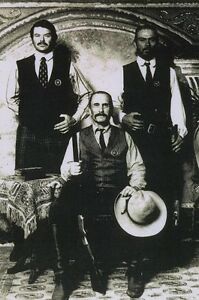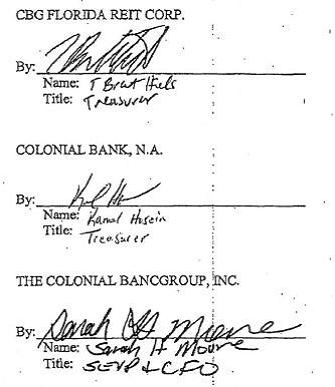Content

Up to the 1800s, investing had been either a game of knowledge or luck. People acquired issues of stock in companies with which they were familiar through industry knowledge or acquaintanceships with the owners. Others blindly invested according to the encouragement of relatives and friends. There were no financials to check if you wanted to invest in a corporation or business; thus, the risks involved ensured that investing was only for the wealthy—a rich man’s sport, tantamount to gambling. As currencies became available and tradesmen and merchants began to build material wealth, bookkeeping evolved.
Leonardo da Vinci drew the illustrations of the regular solids in Divina proportione while he lived with and took mathematics lessons from Pacioli. Leonardo’s drawings are probably the first illustrations of skeletal solids, which allowed an easy distinction between front and back. The work also discusses the use of perspective by painters such as Piero della Francesca, Melozzo da Forlì, and Marco Palmezzano. Essentially ‘a how-to of accountancy’, Summaexplains double-entry bookkeeping, which is fundamental to any tradesman. Not only that, but it introduced the symbols for plus and minus as well as offering advice on the ethics of business.
Health Care Business Analysis Individual Paper
He did not invent these things, but what he did was gather together all the best practices of accounting, and put them in a book. It effectively standardized the profession of accounting and spread this knowledge throughout the business community. One of the most important figures in the history of business and finance is considered to be the father of accounting, Luca Pacioli. He is credited with developing a system of double-entry bookkeeping that is still used today. This system provides a way to track both debits and credits in order to keep more accurate financial records.Pacioli’s work helped to establish accounting as a profession and his impact is still felt today. Double-entry bookkeeping is still the standard method used by accountants all over the world.
The changes in management accounting are a continuous matter that has been discussed by literature over an age. Thus, this paper also aims to discuss about the evolution of management accounting and changing roles of management accountants together with the development of strategic management accounting . In chapter introduction, this paper will explain the history and development of management accounting from ancient until now and also information about future of management accounting.
The Characteristics Of Ancient Accounting
Moreover, the paper intents to evaluate the concept and role of management accounting in regards of Grenville Ltd. In addition, it also highlights the needs of effective financial planning and performance management that might help Grenville to regain the performance that they had conducted at the initial stage of their working. In this day and age, accountants are a dime a dozen and could be considered as a pest to some company directors, but back in history, they were very much valued. Without Pacioli’s work, business and finance would be very different today.

In 1494, his first book on Summa de arithmetica, geometria and proportioni et proportionalita got the publication in the city of Venice in Italy. Most people are not likely to think of accounting when the topic of the “world’s oldest profession” is raised, but many experts believe that accounting fits that description to a tee. From the beginning of trade, people needed a way to keep track of their business dealings even if those dealings were largely self-sufficient subsistence farming for their own needs.
Related articles
And guide to existing mathematical knowledge, and bookkeeping was only one of five topics covered. And he also advised not to finish the work father of accounts until the debit is equal to the credit. If you are an accountant, there is a person in accounting history that you need to know about.
- A receipt is a written acknowledgment that something of value has been transferred from one party to another.
- He described the use of the ledger to account for assets like inventories and receivables, liabilities like notes payable, capital, income, and expenses.
- One of the things he talks about is the “Rule of 72,” which is a method to calculate interest.
- “Owners of these large companies devised systems to summarize the efficiency by which labor and material were converted to finished products” .
- Accounting is important because it provides information that is used to make decisions about how to allocate resources.
When you look at his other books, it reveals his personality, because back then, you would not write a book unless the subject matter was important to you. When you look at these books, you get a bigger appreciation for accounting. Accounting is a little bit math, a little bit business, a little bit art, a little bit strategy, and a little bit of magic.
Luca Pacioli shows that accounting is not just a set of rules, it is a purpose. I really appreciate this approach, because he does not just tell you what to do. Since I am a crazy accountant, I spent my week studying the manuscripts of Luca Pacioli from the Renaissance. I wanted to share with you six insights I had from Luca Pacioli’s work. Luca Pacioli also wrote an unpublished treatise on chess, De ludo scachorum . Long thought to have been lost, a surviving manuscript was rediscovered in 2006, in the 22,000-volume library of Count Guglielmo Coronini-Cronberg in Gorizia.
Who is the first father of accounting?
But the father of modern accounting is Italian Luca Pacioli, who in 1494 first described the system of double-entry bookkeeping used by Venetian merchants in his Summa de Arithmetica, Geometria, Proportioni et Proportionalita.
Then, as now, business sense and ability with numbers were not always found in one person, so math-phobic merchants would employ bookkeepers to maintain a record of what they owed and who owed debts to them. Management directing function seeks to effectively use both the human and raw material wealth of a firm to achieve organizational set objectives on routine basis. Controlling function is the art of tele-guarding the activities of the organization to consistently fall in line with set objectives.
As civilization progressed, ancient bookkeeping methods were developed. In the so-called “Fertile Crescent,” of the ancient Middle East, bookkeepers would use clay tokens of different shapes and sizes to keep track of wealth. Each token could represent a different commodity — sheep, cattle, grain, and so forth. New technologies and recording methods developed over time, and as money was introduced to facilitate economic exchange, the token system was abandoned in the favor of written accounts. Bookkeepers literally became bookkeepers—they kept the written accounts.
Who is the father of account in India?
Shri Kalyan Subramani Aiyar (1859-1940) is known as the father of India's Accountancy Profession. Kalyan Subramani Aiyar established the firm that bears his name and began professional practice in Calicut in 1897.
اترك تعليقاً